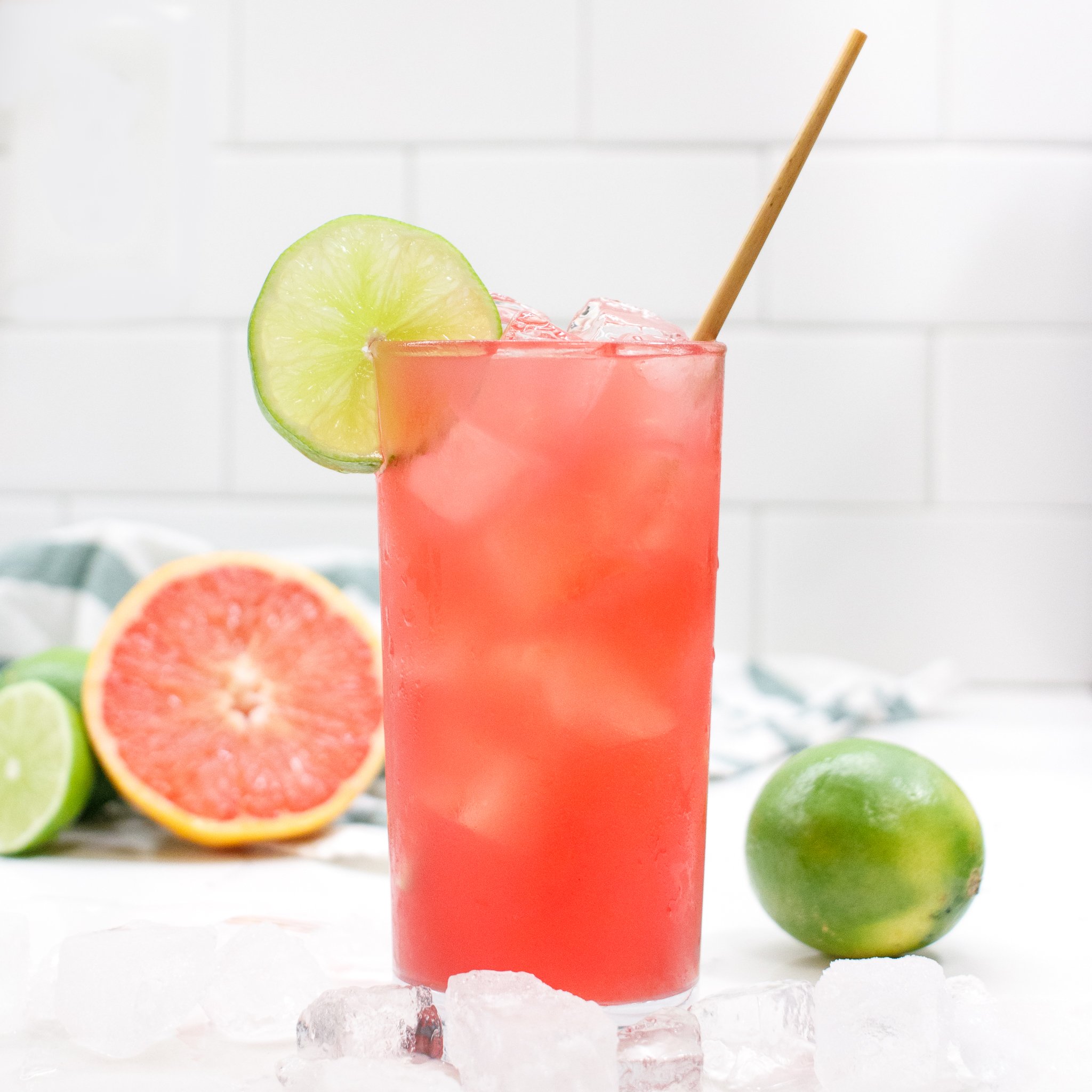2 oz vodka
3 oz cranberry juice
1 1/2 grapefruit juice
Lime slice for garnish (optional)
Fill a tall glass with ice. Pour Vodka and Cranberry into glass and stir. Top with Grapefruit juice. Garnish with lime and serve with a straw.
Most of us think of the Sea Breeze as a cocktail from the 1980s, and while they certainly were very popular then, they actually first blew up at the end of the 1960s thanks to some high profile marketing.
In the early 60s, vodka’s popularity hit a stumbling block thanks to the cold war and the fact that Americans saw vodka as a Russian liquor. So, the people at Smirnoff threw a bunch of money into rebranding, and by the end of the decade, gin was out, and vodka was taking over as America’s clear liquor of choice.
Part of the reason they were so successful was a push to find vodka based cocktails that were easy to make and easy to drink. Thanks to big vodka’s marketing dollars, a whole category of vodka based “coolers” took off at the end of the 60s. It started with the cape codder, or vodka & cranberry which used to go by the name “Harpoon” when it was made with gin. But there was also the greyhound – vodka and grapefruit juice, and the salty dog, which added a salt rim to a greyhound. Then there was the sea breeze, which combined the cranberry and grapefruit juices, and the bay breeze, which was made with cranberry and pineapple juice.
This on its own probably would have been enough to make these vodka based coolers into American cocktail classics, but as it turned out, vodka wasn’t the only beverage in the 60s that needed a rebrand.
In 1959, a bunch of cranberries in the Pacific Northwest were found to contain traces of an herbicide called aminotriazole, which is basically a bog weed killer that caused cancer in lab rats. The U.S. Secretary of Health told people to stay away from cranberries if they didn’t know exactly where they were coming from, and cranberry farmers took a huge hit.
Enter a little cranberry farmer’s collective that formed in 1930 called the Cranberry Growers Cooperative. Today we know them better as Ocean Spray. In the 60s, to try to get people to start buying cranberries again, they started publishing recipe cards, booklets, and newsletters with all kinds of cranberry and cranberry juice recipes.
At the same time that vodka was pushing for simple fruity cocktails, Ocean Spray was also pushing cranberry juice as a great mixer for boozy drinks. That’s why so many of the vodka coolers that became so popular at the time called for cranberry juice. By the end of the 60s, these “breeze” drinks started appearing in the top ten most popular mixed drinks of the era.


